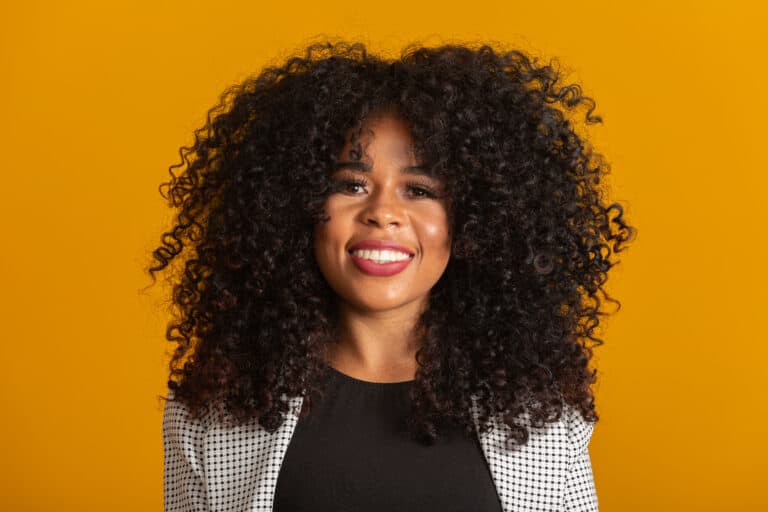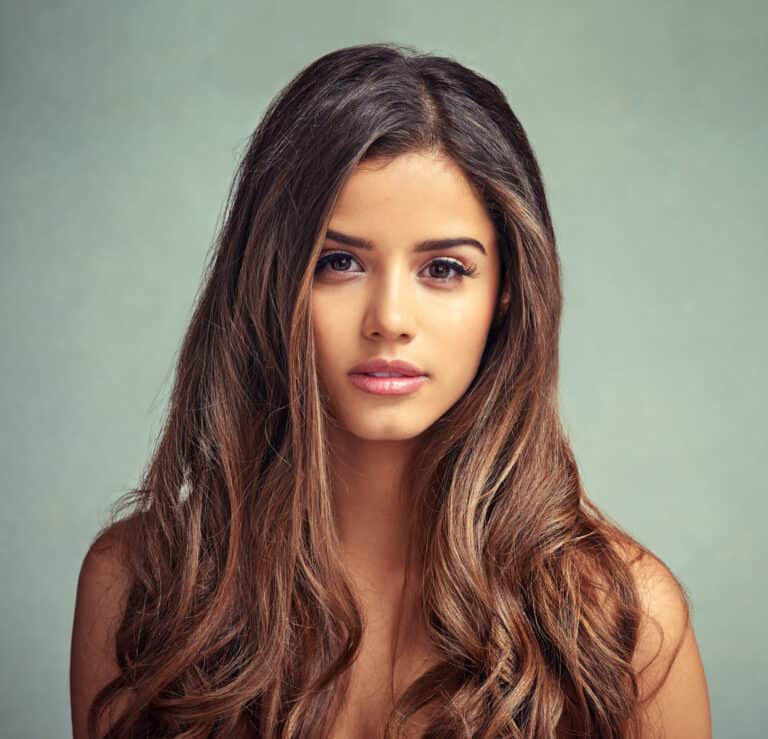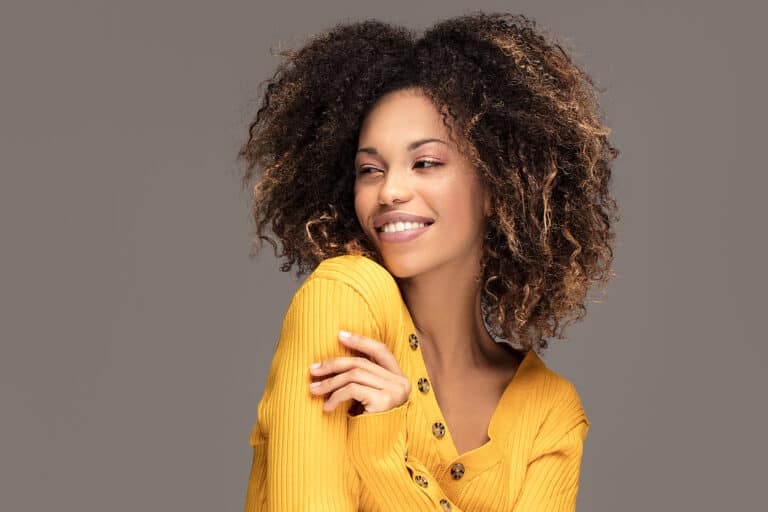Curl Types – What Are They and Why Do They Matter
This post may contain affiliate links, and I will earn a commission if you purchase through these links. Please read the disclosure policy for more details.
Knowing if you have straight, wavy, curly, or coily hair is vital to good hair care. But identifying curl types can be tricky, and it’s not always easy to tell the difference.
So we’ve put together your essential guide to curl types, helping you understand all the different curl types and identify your curl pattern. With this information, you’ll find it easier to pick the best hair products to suit your hair!
Let’s start by discovering why your hair is wavy, curly, or coily.
What Causes Curly Hair Patterns?
Hair types are determined by genetics, and although you can use heat or chemicals to alter how your hair texture looks, you can’t change your hair pattern.
Your visible curl pattern partly depends on each hair follicle’s shape. Straight hairs grow from round hair follicles, and oval hair follicles create waves. If you have twisted oval follicles, the hair that grows from them will be curly.
And the size of the hair follicles determines how thick or fine each hair strand is. The larger the hair follicle, the thicker the hair fiber that grows from it.
The chemical bonds within the strands also contribute to your hair pattern. The cysteine groups that form your hair are spread further apart in straight hair than in wavy and curly hair. The oval shaped and twisted oval follicles create more chemical bonds in your strands, resulting in a tighter curl.
Curl Type or Curl Pattern?
One thing I want to clarify before getting into the rest is there is a difference between curl type and curl pattern. But people use these terms interchangeably.
Curl pattern is the shape your curls make, which is what most of this article is about. This is what people usually mean when they say curl type.
Curl type is really hair type. It refers to your hair’s characteristics, such as texture, porosity, and density.
Why You Should Know Your Hair Curl Type
Working out your hair type can be confusing, especially because most people have a mix of hair types. Your hair might be curlier in some areas and straighter in others, and somehow you have to make it all look good.
Knowing your curl pattern doesn’t really help much though. You won’t choose products based on your curl pattern. For example, your curl pattern doesn’t tell you if your hair needs more or less moisture, light or heavy products, or specific treatments. But knowing your hair characteristics will help with that.
Understanding your hair type and how to care for it is one of the essential steps toward caring for your locks. Even if you can’t pin your hair down to one type, having a good idea of your curl type will help you understand how to care for your hair and pick the best hair products.
How to identify your curl pattern
The Andre Walker Hair Typing System is one of the easiest ways to categorize types of curly hair, or more accurately, curl patterns. This system divides textured hair into four main categories:
- Type 1: Straight
- Type 2: Wavy
- Type 3: Curly
- Type 4: Coily
So how do you tell if you have wavy, curly, or coily hair? The easiest way is by looking at the shape of your hair strands.
Type 1: Straight strands lie flat without much wave or body.
Type 2: Wavy strands aren’t quite straight or curly but form an S-shaped curve.
Type 3: Curly strands cluster together into loose spirals and might need some added moisture to give more definition.
Type 4: Coily strands form tight coils, while kinky hair has a tight zig-zag pattern rather than curls or waves. These types are fragile and need special care to prevent breakage.
Each category is divided into sub-classifications, A to C, based on the width of your waves, curls, or coils. Type A has wider curls, Type C has the tightest curl, and Type B lies in the middle. You can see the differences in the curl pattern chart below.
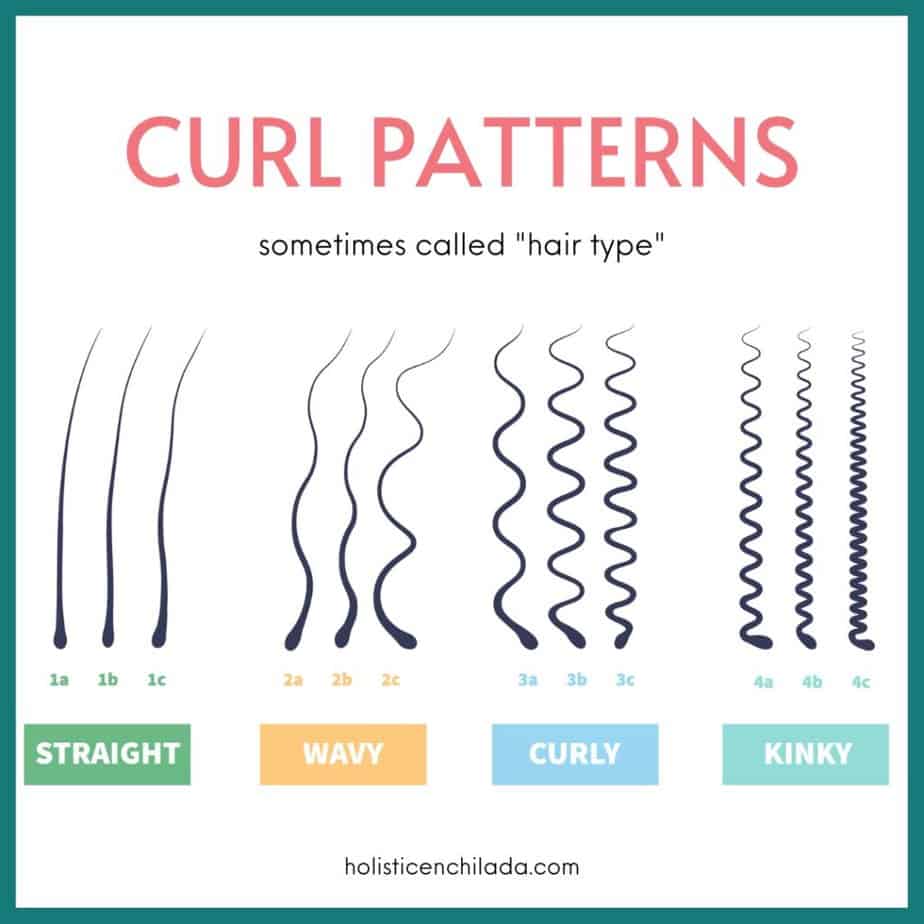
Types of Curl Patterns
Hair typing is a great starting point for understanding the best product and styling options for your hair. So, putting aside type 1 straight hair, let’s look at each of the nine curl type categories.
Type 2 Hair
Type 2 waves can range from barely there to almost curly, and when it’s wet, the weight of the water may make wavy hair look almost straight. The main difference between wavy and curly hair is that wavy hair doesn’t form twists that wrap around themselves.
Type 2 wavy hair needs plenty of moisture and nourishment, but using too many styling products can weigh it down and make it look limp.
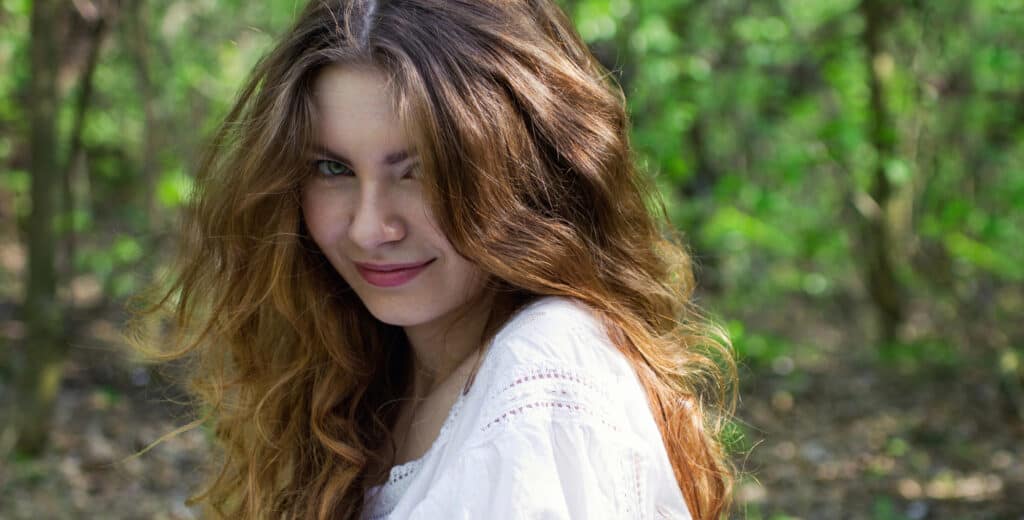
Type 2A Hair
2A hair type tends to be straight at the crown and then forms loose waves towards the end of the hair strands. Air-drying will help to accentuate your natural waves.
This wavy hair type also tends to lose its shape easily, so you should avoid heavy products that can weigh your locks down. Instead, use a light mousse to add volume at the roots and enhance your desired look with sea salt sprays to add tousled texture.
Read more in our 2A hair guide.

Type 2B Hair
Type 2B hair is straight at the roots but falls in medium-large S-shaped waves from the mid-lengths down. The strands tend be more resistant to straightening than 2A hair, and will also have more frizz.
You can use texturizing products to enhance your natural beachy waves and add a light gel to keep control of any frizz.
Read more in our 2B hair guide.
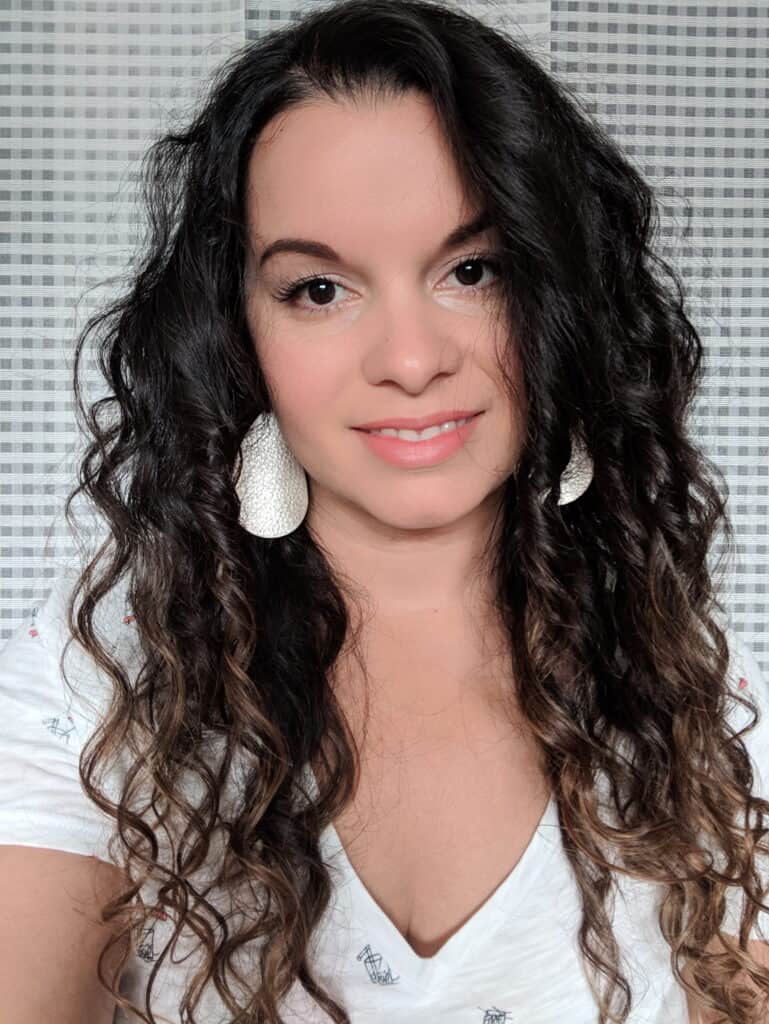
Type 2C Hair
Type 2C waves are on the border of curly hair, and you might also have a few curls of type 3A hair. However, 2C type hair doesn’t form springs, which are one of the distinguishing features of curly hair types.
2C strands are prone to frizz, so you may find it hard to manage frizz without weighing down your strands and losing volume. Serums, leave-in conditioners, and gels will be your best friend in the fight against frizz, and sleeping on a silk or satin pillowcase will also help.
Read more in our 2C hair guide.
Type 3 Hair
Type 3 curly hair can look wavy when it’s wet, but the strands curl together into springs and swirls as it dries. Type 3 curls can vary in size from soft loops to tight corkscrews, and frizz is a common problem for this hair type.
So look out for products that prevent frizz and define your curls to keep them looking fantastic.
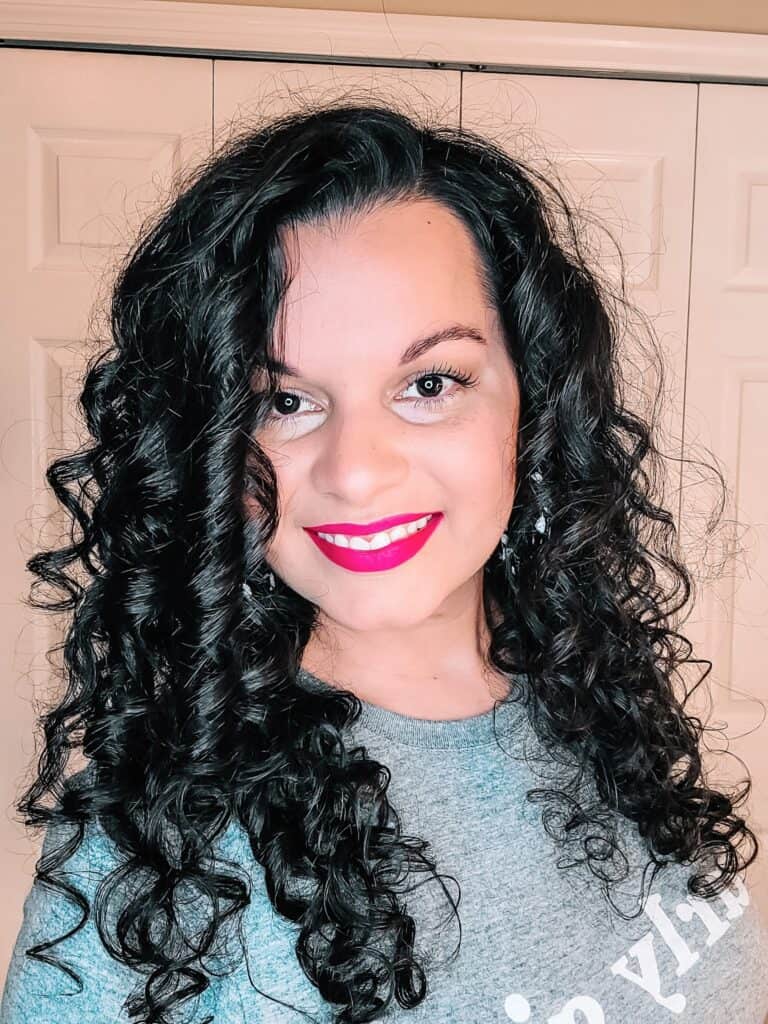
Type 3A Hair
3A curls are wide spirals about the size of a piece of sidewalk chalk and fall loosely from the crown. This curly hair type is bouncy, full of life, and doesn’t need much styling. A curl cream and light gel will help keep your locks under control.
Type 3A has loose curls that can be straightened with heat styling tools or a blow-dry brush, but they tend to be dry. That makes regular deep conditioning a must, and you should always use a good heat protectant to avoid further drying your curls.
Read more in our 3A hair guide.

Type 3B Hair
The medium-sized corkscrew springs of curl type 3B are around the size of a Sharpie marker. They have plenty of curl definition and natural volume.
However, 3B curls can be prone to frizz, tangles, and breakage, so use a microfiber towel or cotton t-shirt to dry your locks gently after washing. A moisturizing custard or gel will keep frizz at bay and give your curls extra shine.
Read more in our 3B hair guide.
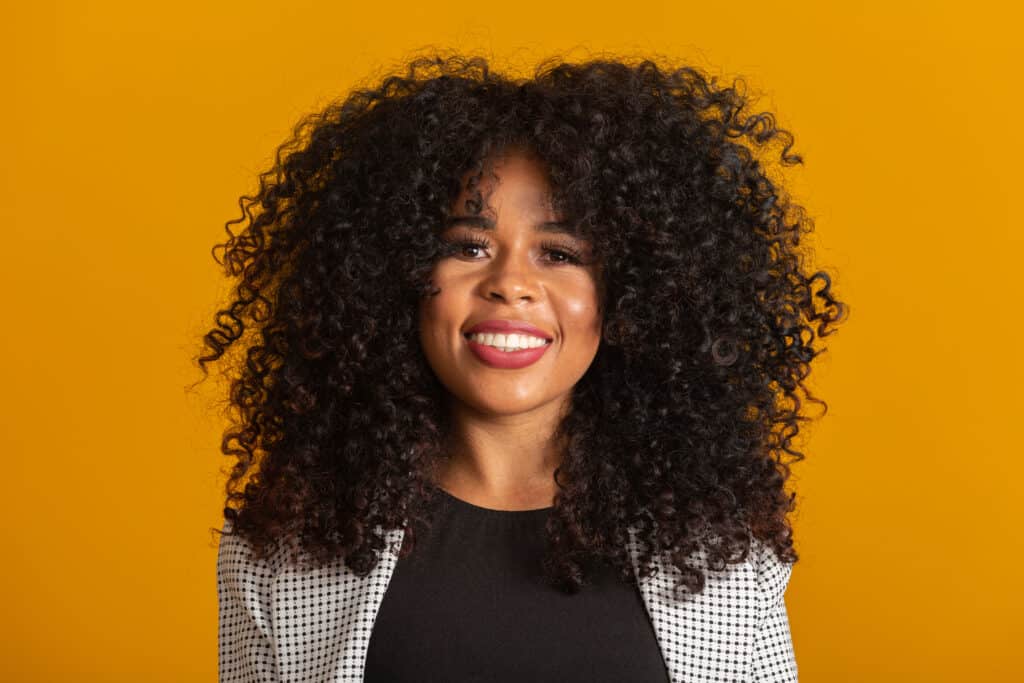
Type 3C Hair
The 3C hair type has tightly packed springs that are smaller than the other curly hair types, with curls the width of a pencil or straw.
Curl type 3C also tends to be drier than types 3A and 3B. Rich oils and butter will weigh down your curls, so cleanse your locks with gentle shampoos or cleansing conditioners and use weekly deep conditioning treatments to keep your curls soft and full.
Read more in our 3C hair guide.
Type 4 Hair
Type 4 hair can have tightly coiled strands, a compact zig-zag pattern, or a combination of both shapes. It also experiences more shrinkage than type 3 hair, so examining the strands when they are wet might make it easier to identify your curl type.

Type 4A Hair
Type 4A has tightly coiled S-shaped strands that loop into tight rings about the size of a crochet needle. These tight corkscrew curls make it hard for the natural oils from your scalp to travel to the ends of your textured hair, which means that type 4 hair is dry and easily damaged.
To minimize damage, use rich, moisturizing shampoos and conditioners, and avoid rubbing your locks dry. Creamy humectants and custards will protect your locks, add moisture, and reduce frizz.
Read more in our 4A hair guide.
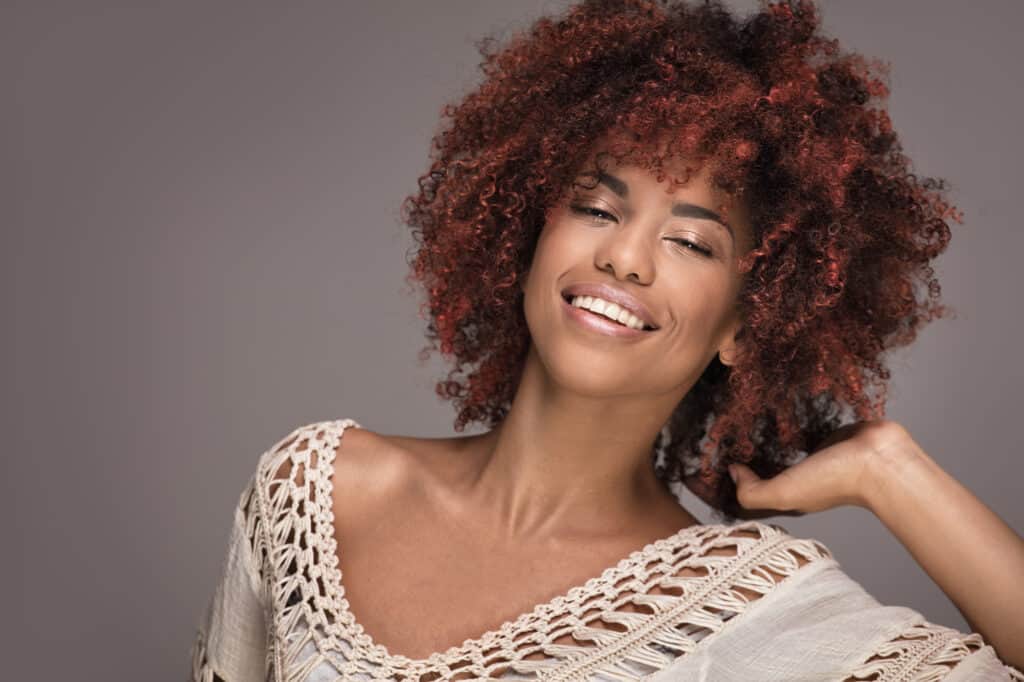
Type 4B Hair
4B hair often has a mix of zig zag strands and small S-shaped coils with less curl definition than other hair types. All of those sharp angles and bends stop your scalp’s natural oils from reaching the ends of the densely packed strands, so this curl type is often dry and easily damaged.
Rich, nourishing conditioners and masks are essential for 4B hair, and you could try the LOC method to keep it in top condition.
Read more in our 4B hair guide.
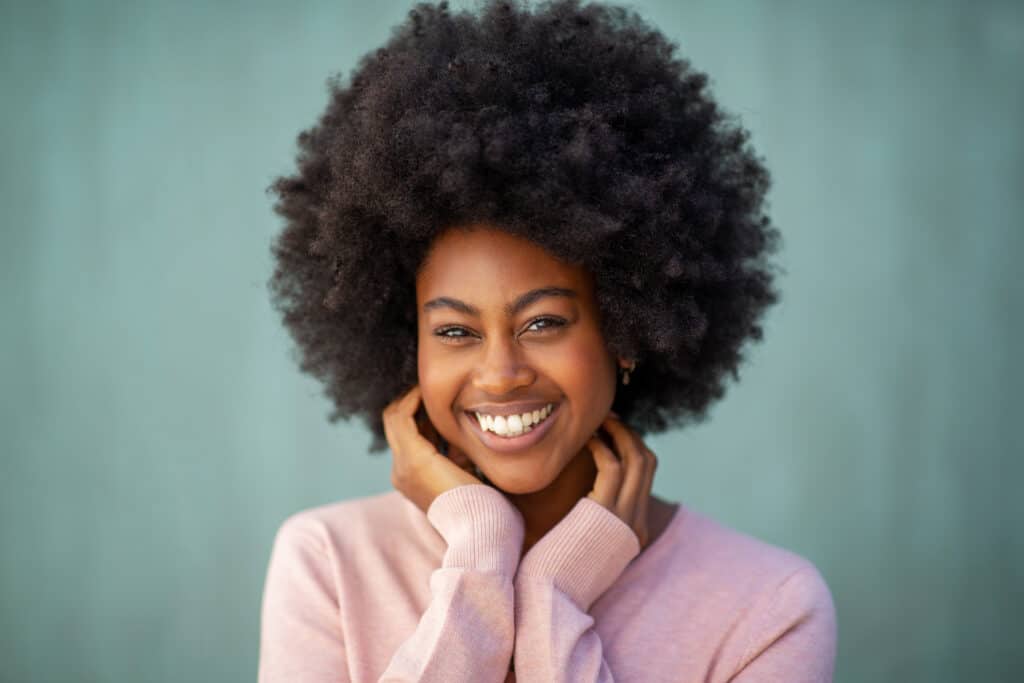
Type 4C Hair
4C hair has the tightest curl pattern of any category in the Andre Walker Hair Typing System. These tight zig-zags have little curl definition and up to 75% of the wet hair length can be lost as it dries.
It’s also the hair type most prone to breakage, so you must constantly moisturize your locks with rich creams and custards and use a good shampoo to prevent buildup. Regular deep conditioning is essential for these fragile strands, and you can protect your locks from overnight damage by wearing a silk bonnet for sleeping on a silk pillowcase.
Read more in our 4C hair guide.
How to Choose the Best Products for Your Curl Type
Knowing your hair type is a great first step toward figuring out your hair care routine. If you know you have coarse curls, you can skip over lightweight leave-in conditioners and head straight for creams and butters. And if you know your hair only has fine waves, you won’t risk weighing them down with rich, heavy products.
But there are other factors you need to consider, like your hair porosity, elasticity, and curl variation.
Determine Your Hair’s Porosity
Hair porosity describes how easy it is for your locks to absorb moisture and how easily the strands lose moisture again.
Low porosity hair has closely packed cuticle cells that make it hard for the strand to absorb water, but it doesn’t lose moisture easily. On the other hand, high-porosity hair has cuticle cells that are spaced further apart. This means the strand absorbs hydration quicker but also means that hydration is easily lost.
It’s best to stick to products containing lighter ingredients, such as aloe vera, on low-porosity hair. If you have high porosity hair, reach for rich products containing ingredients like coconut oil instead.
To see if your curls are high or low porosity, observe how quickly your hair absorbs water. If you want to know more, our guide to hair porosity has all the details.
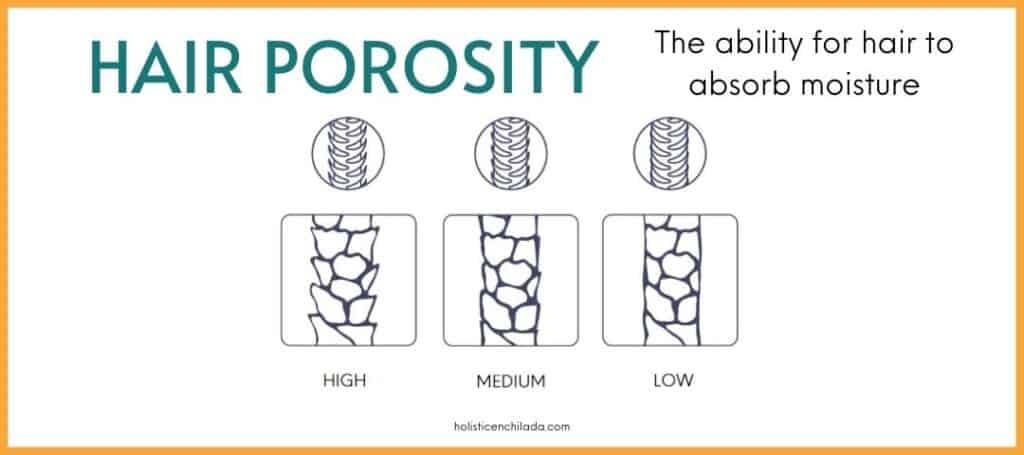
Assess Your Hair’s Texture
Probably the most important hair characteristic, your hair texture is the diameter if the hair strand.
Your texture will determine the weight of the products you use. Finer hair requires lighter products while coarser hair requires heavier, creamy products. Finer hair will also need more protein than other types to help strengthen the strands.
Again, it’s normal to have a variation of textures around your head. Go with the recommendations for whichever texture is most prominent or problematic for you.
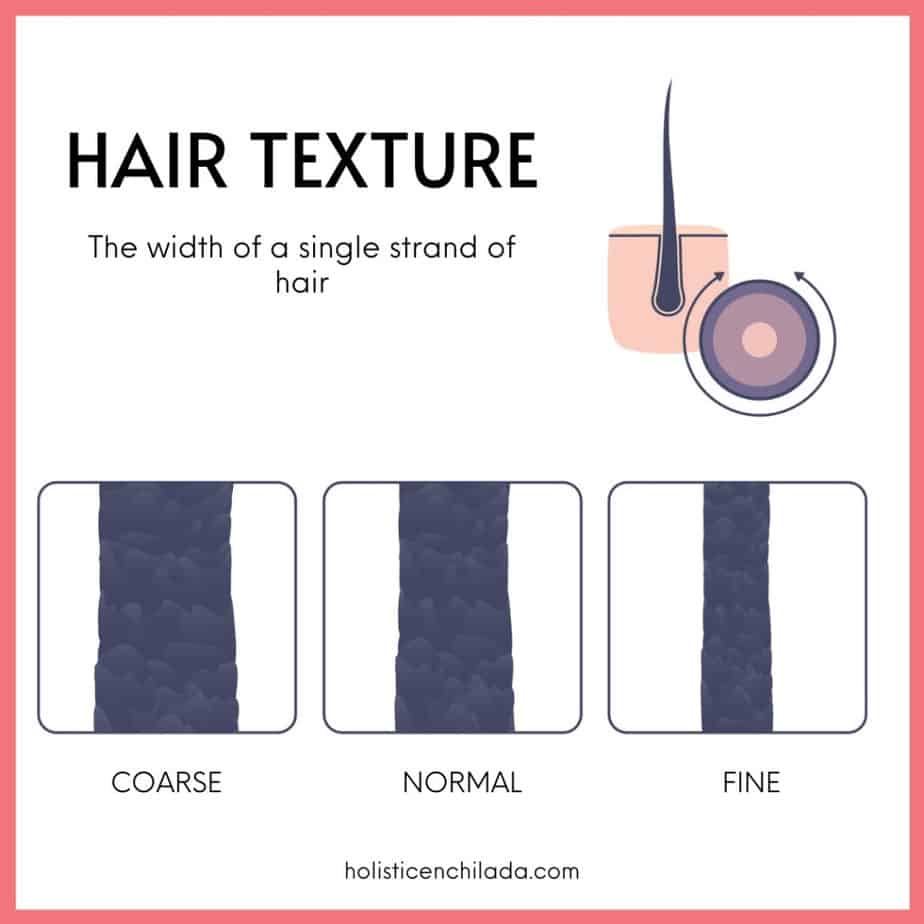
Consider Your Density
Density refers to how many hairs you have, or how much hair you have overall. High density means you have lots of individual hairs, where as low density means you have fewer hairs so your scalp show more easily.
Knowing your density can help you with knowing how much product to use and which styling techniques will yield your desired results.
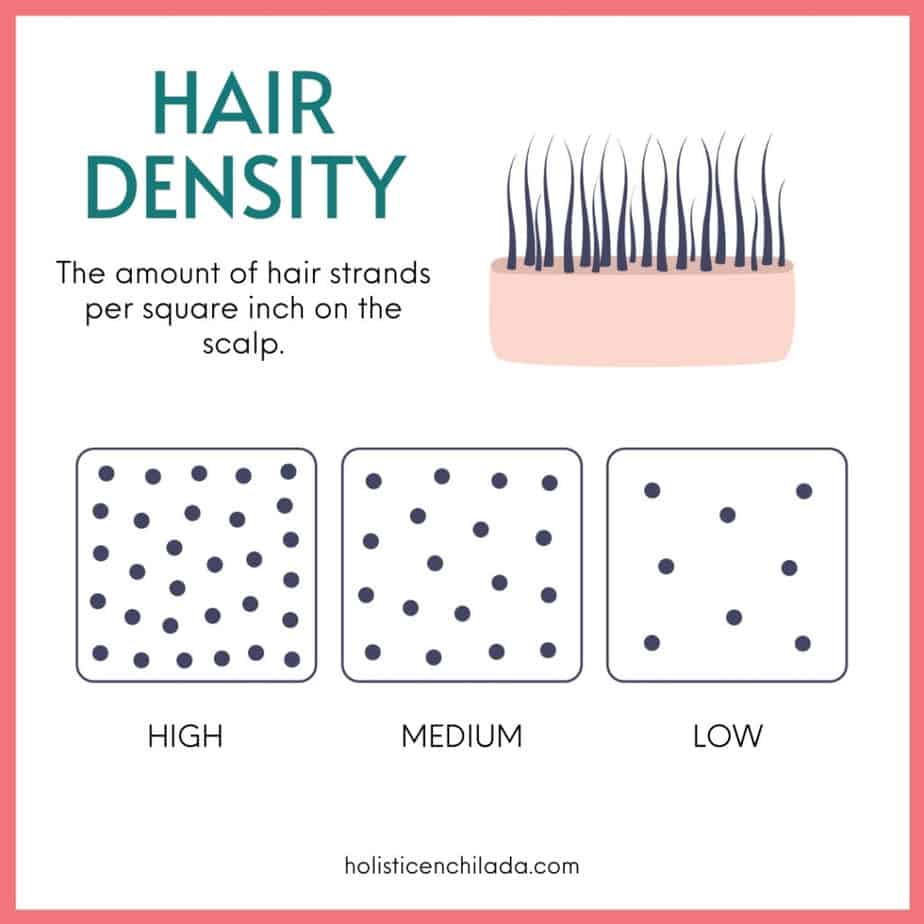
Evaluate Your Hair’s Elasticity
Elasticity refers to how easily your hair bounces back when you stretch the curls out. So take a few strands and stretch out the curl – if they don’t coil back fully, you need to give your hair more moisture.
Check your Curl Variance
If you have a mix of hair types, you may need to treat each section slightly differently. But that doesn’t mean you need to go shopping for a whole different set of products; you can usually use slightly more or less of a product to suit each section.
Curly Hair Type Quiz
If you need help figuring out your hair type in order to choose the right products and techniques, this curl type quiz can help you. It will not tell you what curl pattern you have, as that is not helpful to determine what your hair needs. It will give you a general idea of your porosity, density, and texture and provide some tips for products.
Curly Hair Types – FAQs
Identifying your curl type can be tricky, so here are the answers to some questions you might still have.
Is It Possible to Have Multiple Curl Patterns?
Yes, definitely!
Most people will have a mix of curl types; for example, you might mainly have 3B curls but have 3C hair at the back of your neck. And your strands might be finer and more fragile in some areas.
But generally, one curl type will dominate your hair, which you should use as a starting point to help you choose products and styling techniques.
Should Your Hair Be Wet or Dry to Determine Its Curl Pattern?
The weight of the water on wet hair will change your curl pattern temporarily. Apply a curl-defining gel to your dry hair and let it dry before identifying your curl pattern.
Is 2C Hair Curly or Wavy?
2C is the last of the wavy hair types and can border on curly hair. However, the strands don’t twist together to form springs, which differentiates 2C waves from curly hair.
Final Thoughts: Identifying Curl Types
Knowing your hair type is one of the most essential pieces of information to help you care for your locks properly. It will help you understand how to wash and style your hair and choose the best hair care products.
Of course, there’s more to good hair care than simply knowing your hair type. You must also consider factors like your hair porosity, elasticity, and curl variance.
But following the information in this guide will help you better understand your hair’s needs, which is a great starting point for beautiful hair.





